It’s one thing to teach a grammar skill or a writing convention … and another for students to actually apply it!
I mean, how many times have you talked about capitalizing the beginning of a sentence—and then still seen your students forget to do so in their writing?!
Getting kids to apply their grammar learning isn’t easy. It takes time and careful intention. But it IS possible! In this post, I’ll share my five top tips for getting kids to apply their grammar learning to their writing.
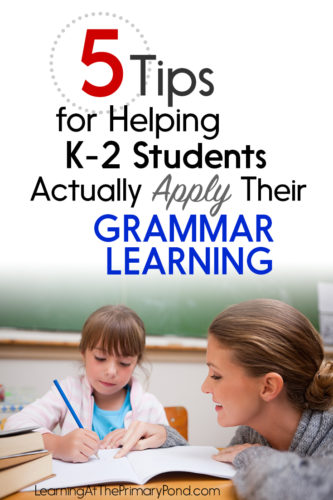
Tip #1: Show students how grammar concepts apply to real reading and writing.
I’ve talked about this extensively in previous posts, but in case you missed it — the research shows that grammar is best taught in the context of reading and writing instruction.
Kids need to see how authors use capitalization, punctuation, and other grammar rules in their work. And they need support with applying those same skills to their own writing.
Traditional grammar drills and sentence editing are not effective instructional methods. If we want our students to apply their learning, we have to show them real-life examples of grammar and conventions in texts. And we have to get them to practice those skills in their own writing.
For more tips on how to do that, check out this post and this post.
Tip #2: Make sure students understand the WHY, not just the HOW.
At first glance, the study of grammar and conventions seems mostly about memorizing rules. You always need to capitalize a sentence. You always need a punctuation mark at the end of a sentence. The subject and verb need to be in agreement. Etc.
But in reality, there are REASONS why these conventions exist!
For example, ending punctuation marks tell us a) that a sentence is finished and b) how we should read the sentence. They contribute to the meaning of the text!
Another example: there’s a reason why we have past and present tense forms of verbs—so the reader or listener knows when something happened!
When we present a grammar or conventions concept to students, it’s important that we first focus on the WHY (Feigelson, 2008).
Why is this convention important? What does it accomplish for us as readers and writers?
We can also apply the “why” to our conversations with kids about their writing.
Instead of saying, “You need a period at the end of this sentence,” we can say, “Where do you want your reader to pause and take a breath on this page?”
When kids understand why they need to use a certain convention, they’re more likely to actually use it in their own writing.
Tip #3: Provide editing practice AFTER you teach students about the convention—not during the initial instruction or instead of the initial instruction.
Even though our grammar instruction should be closely tied to our writing instruction, we need to hold off on editing practice for a bit.
We should wait to provide editing practice until after students have learned about the convention and had some opportunities for practice that don’t involve editing (Anderson & La Rocca, 2017).
And this makes sense, right? We have to build a foundational understanding before our students can really apply the skill.
If we want to teach our students about using apostrophes in contractions, for example, we want to show them examples of correctly-formed contractions. We’ll want to point out examples in published texts. We’ll model how to create contractions and have the kids create a few of their own to practice.
Then—and only then—our students might be ready to edit their own writing, looking for contractions and inserting apostrophes.
In a nutshell: it’s hard for kids to see errors in their own writing, and it’s even harder if we haven’t provided enough appropriate instruction in a concept before we ask them to make corrections to their writing.
Tip #4: Give kids opportunities to see the convention used correctly in multiple contexts. Give kids practice editing for the convention in multiple contexts.
Published texts (like the books we read during read-alouds or shared reading) are great for showing kids examples of conventions and grammar rules used correctly.
But we have to show them more than one example for the idea to really “stick!”
And when we ask our kids to edit for a specific convention, we can’t expect them to practice once and then be able to do it independently from then on. We need to give our kids supported opportunities for editing practice in multiple contexts—multiple pieces of writing (Anderson & La Rocca, 2017).
Tip #5: After you introduce a grammar skill or convention, don’t immediately add it to an editing checklist.
I guess the theme of Tips 3-5 are “give them time!” 🙂 It just takes time for students to really master a concept. It’s not reasonable to teach them a skill one day and then expect them to use it correctly in their writing the next day.
It’s great to have a growing and changing editing checklist, but we have to give our kids enough time to master a skill before we make them “responsible” for it by adding it to the checklist.
Conclusion
If your kids are struggling to apply the grammar skills and conventions that you teach them, you’re not alone!
But the good news is this: you don’t have to teach them ALL the things in one year. It takes kids time to learn these skills. We can support them by grounding our instruction in real texts, presenting multiple opportunities for learning, and giving kids time.
Update! The grammar series is now complete! You can read each post in the series here:
- Best Practices for Teaching Grammar in K-2
- How to Integrate Grammar Into Your Writing Instruction
- How to Integrate Grammar Instruction Into Shared Reading or Close Reading
- How to Find Time for Grammar Instruction
- Grammar Skills by Grade Level: a List of Grammar, Language, and Writing Conventions to Teach in K-2
- 15 Picture Books For Teaching Grammar and Conventions
- Grammar ALIVE! A 3-Part Approach for Engaging, Relevant Grammar Instruction in K-2
Need grammar lessons, materials, and games to help you implement the principles in this post? Click on any of the images below to read more about my Grammar Alive program for Kindergarten, first grade, and second grade:
Happy teaching!
References
Anderson, J., & La Rocca, W. (2017). Patterns of Power: Inviting Young Writers into the Conventions of Language Grades 1-5. Portland, ME: Stenhouse Publishers.
Feigelson, D. (2008). Practical Punctuation. Portsmouth, NH: Heinemann.
Graham, S., MacArthur, C. A., & Hebert, M. (Eds.). (2019). Best Practices in Writing Instruction (3rd ed.). New York, NY: The Guilford Press.
Ruday, S. (2013). Five Recommendations for Teaching Common Core Grammar to Elementary Students. Larchmont, NY: Eye on Education.

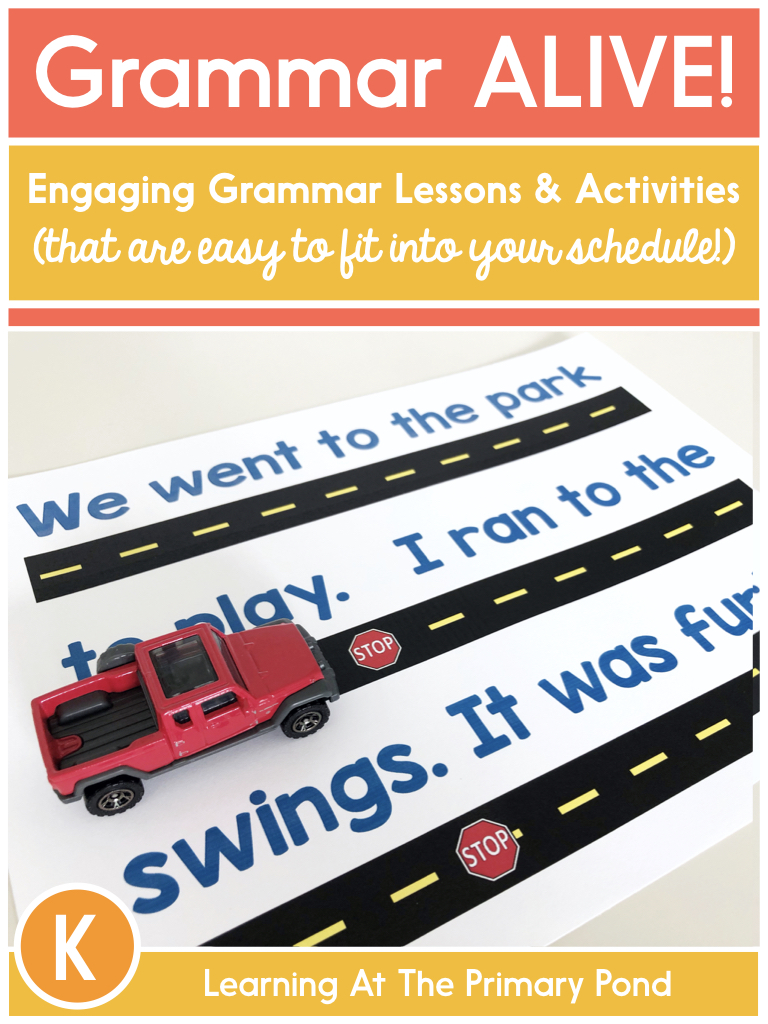
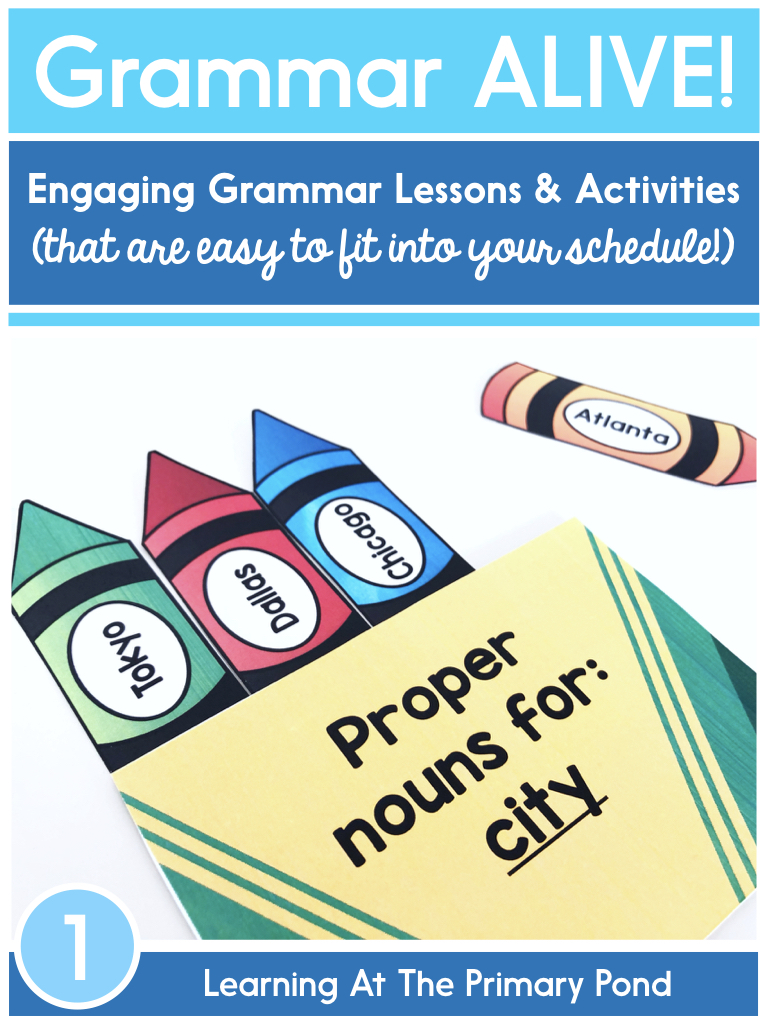

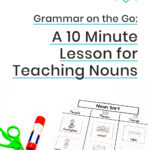



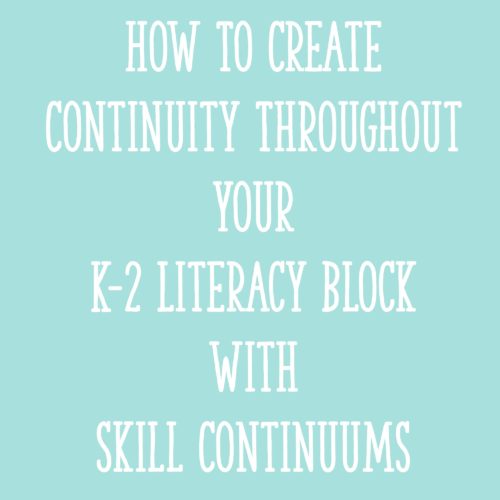







Since I’ve started following you, I’ve really enjoyed your articles. Thank you.
I’m so glad – thanks for following along!!
Alison
Alison, I’ve been teaching for thirteen years, and I always learn something new from you that I can apply in my classroom for real results. Thank you so much for helping to make me a more effective teacher every time!
Thank you so very much, Renee! That means a lot to me – very glad I can help!!
Alison
Do you have a list of grammar skills that you think are appropriate for 1st graders to master by the end of the year?
Hey Jill! I do have a list of things that we work on – but I don’t expect the kids to master all of them (I’ve found that some of the skills take repetition over years for them to master). But I hope this list helps! https://learningattheprimarypond.com/blog/grammar-skills-by-grade-level-a-list-of-grammar-language-and-writing-conventions-to-teach-in-k-2/
Alison
Thank you for sharing this information. I hope you share more info on the same topic.
pro-grammar
Great to hear!